It happens that you just need to delete a folder or file, and Windows does not allow you to do this and writes about errors like "this process is busy" or "folder is not empty" or something else. Maybe you found some folder or file that you "did not like" and want to delete it. Maybe you know for sure that this is "unnecessary junk" which only takes up space, and Windows swears and does not allow it. In general, it is not so important Why can't you delete, how How to delete and in this article you will find the answers to this question.
Most often, such situations occur due to the fact that the deleted files are occupied by other programs. But it also happens that it is impossible to delete a file even after closing all applications that can use this file. For example, a file or folder may become locked due to incorrect user actions and cannot be deleted in any way. These folders (files) remain "hanging" on the hard disk, take up space, cannot be opened or deleted.
The file may not be deleted due to a failure in the process of writing or overwriting it. If you interrupted the recording process, then the file was not completely saved, as a result of which there were invalid entries in the file system. And our beloved Winda, not knowing how to handle it, simply simply closes access to it, such as for security purposes.
So let's start dancing with a tambourine!
Why isn't the file being deleted?
1) The file was blocked by an antivirus program... This often happens when antivirus quarantines a file. Or the antivirus has detected a malicious program, but disinfection has been postponed (it is waiting for its databases to be updated). In this case, in order to avoid infecting the computer, the user is blocked from accessing this file. Check the antivirus program quarantine and delete the file using the antivirus itself, or disable the antivirus and delete the file manually.
2) The file is in use by another program... Think about what programs can use this file. Close them and try deleting the file again. If this does not help, use the Task Manager to check the list of processes, the program may still be running.
3) Administrator rights are required to delete a file... If you are using a user account, re-enter the system as administrator and try to delete the file.
4) The file is being used by another user on the local network... Please wait and try to delete the file later.
5) The file is in use by the system... Try deleting the file after restarting your computer or in safe mode.
6) The device is write protected... For example, SD memory cards and some USB sticks have a special switch to lock the device.
There are several ways to remove, I will start with the simplest and most effective and gradually move on to more complex ones.
1. Method:
Reboot
We, programmers, have a saying - "7 troubles - one reset". What does it mean you can think out for yourself
But the point of the method is that you need to restart your computer and try to delete the file / folder again.
2. Method:
Safe mode
You need to login in Safe Mode.
What is the advantage of booting the system in safe mode? The point is that Windows does not load its libraries to execute dialogs. Simply put - if you have a virus on your computer (and this is not excluded), then in this safe mode it will not perform any actions. There is nothing superfluous in this mode, only a pure AXIS and a person.
In order to enter this mode, when you turn on the computer and after loading the BIOS (or in general you can from the very beginning of the "black screen" boot) press the key intensively without stopping F8(no need to press and hold !!!). A black screen will appear, in which you need to use the keys on the keyboard to select Additional boot options, and there is already Safe Mode (well, or just Safe Mode, you do not need to select all sorts of there With command line support, etc. And so it will do) and press Enter. If you did everything correctly, the system will boot and in the lower right corner there will be an inscription Safe Mode (it can still be in all corners in general). Do not be intimidated by the black screen that will appear) without wallpaper and beauty.
Now you need to find the file that you just could not delete and try to delete it. In any case (whether it worked or not), reboot.
3. Method:
Through the Unlocker program
It is for such purposes that the good guys wrote such a program, called Unlocker... It is a very small, free program for unlocking files running in Windows. This utility allows you to close open file blockers, thereby making it possible to carry out further actions on these files. Those. the program shows all processes that are blocking the file (folder) and can delete it, despite all the blockers.
In addition, the program allows you to rename files and their extensions or move a locked file to another location. This is also very convenient, because Windows does not always allow you to do this quickly and easily.
When installing, DO NOT agree to the proposed toolbar (well, or you really need it, then click Next) and uncheck the box Install Babylon Toolbar - RECOMMENDED... For the rest, the installation is normal - everywhere Further I Accept Install and all the cases)

Just right-click on the file that is not deleted (not moved / not renamed) in the usual way and select the program icon from the menu. A window should appear in which you select Delete from the list and press the button OK.

If the file or folder is locked, another window will appear. In it, you first need to click on the button Unblock All, and then Delete.

For those who do not know what bit depth on the system - read
4. Method:
Through file managers
Of all the most popular and frequently used file managers, Total Commander is the most popular.
File managers have the ability to bypass some of the Windows restrictions, which we will use.
To delete a file that cannot be deleted, we need to download one of these file managers, FAR or Total Commander (I use Total Commander Podarok Edition). After downloading and installing, find your file in the list of directories and delete it by pressing either the right mouse button and select Delete, or the Delete key on the keyboard.
Also, these managers have a good opportunity to see everything that is hidden and encrypted (especially in different colors, like mine). If your folder is not deleted, then we go into it through the manager and see what is there. If you see a hidden file, it means that it interferes. Then we launch the Task Manager ( ctrl + shift + esc), go to the Processes tab and look for this file in the list (it's also good to click on the button at the bottom left of the dispatcher Display the processes of all users), find and finish (del or RMB -> End process or in the lower right corner the End process button). With files the same application, look for the file name and "kill".
5. Method:
Another option with Unlocker
If you do not delete the folder, writes something like "the folder is not empty", then create a new folder on the same disk, transfer the non-removable folders to a new folder, delete the new folder using Unlocker
6. Method:
Using autoload
Click Start => Run => In the Run line enter msconfig => Click OK... You will see the System Configuration window. Go to the "Startup" tab and in the list of loaded items, find a name similar to your "non-removable" file.

If there is no such file in the list, then click on the "Disable all" button. Click on Apply => Close. The operating system will issue a warning that all changes made by the system setup program will take effect only after the computer is restarted. Click the "Restart" button. The computer will restart. After downloading, try deleting the "non-removable" file again.
7. Method:
Using system restore
In the "System Settings" window (which was the same as in the previous paragraph), select the "General" item. Click on the "Run System Restore" button. In the window that appears, specify the item "Restore an earlier state of the computer", click "Next". In the new window, you will see a calendar in which you can select the date of system recovery. Select the date when the “non-removable” file was not on the computer. Press "Next". Don't worry, System Restore won't affect your personal files.
8. Method:
Lack of access rights to delete files
Right click on the problematic object and select "Properties" from the dropdown list
In the window that opens, select the "Security" tab
Highlight your name in the list and select "Full Control"
- "Apply" and "OK"
Trying to remove
9. Method:
Please use a different operating system.
Try booting from a removable disk (or CD / DVD) (LiveCD or LiveUSB) with a different operating system. Then delete the file / folder.
10. Method:
Move somewhere.
Sometimes it helps to move (cut) a folder to an empty USB flash drive and format it later.
11. Method:
In the window, type the command chkdsk c: / f / r and click Enter, it should be borne in mind that with: is the name of the drive that you want to check. If the drive being checked has a different letter, then write it.
If the drive being checked is C :, then when you press Enter You will be prompted to check it on the next reboot. When asked whether or not to check on the next reboot, enter Y and press Enter.
If the disk name is different, then the check will start immediately. At the end of the check, the check result appears. We type exit and click Enter.
Now you can delete the file that you didn't want to be deleted. In the case of the C drive, just restart the computer and after checking, delete the non-removable file.
12. Method:
If you open the command line via Start - All Programs ... run the process as administrator (RMB and Run as Administrator) and move to the folder with the non-removable file (or folder) using the cd \ command in order to be in the root directory disk, and then cd folder_name to enter the desired folder.
Probably, it is not necessary to say that many of us have come across a situation when, when working with removable storage devices, the selected folder from the flash drive is not deleted. What to do in this case? Untrained users, no matter how they try, nothing happens, as a result of which they tend to make a decision on formatting the media.
Yes, indeed, this is the most radical way to delete all the contents of a flash drive. However, in some cases, when it is necessary to delete not all, but only some selected directories, and also if the device is protected against any actions, this method turns out to be inapplicable. However, let's look at what can be done and how to get out of this situation.
Why is the folder from the flash drive not deleted (writes: "The disk is write-protected" or "The folder is not empty", etc.)
To begin with, you should pay attention to finding out the reasons for this phenomenon.
And first of all, you need to look at the content of the message that is displayed when you try to delete the selected directory:
- If the folder from the flash drive is not deleted, and the notification mentions write protection, this indicates that protection is enabled on the device itself (mechanical, cryptographic, etc.).
- Sometimes there are messages that there are some files in the selected directory, but they are protected from deletion.
- Sometimes nested objects can be occupied by some processes currently running in the system. Certain categories of viruses that block access both to the directories themselves and to their contents can be called a very common reason for this phenomenon. In this case, a notification is also issued that the folder is not empty, the folder is not deleted from the flash drive, and it is impossible to perform any actions with the attached files.
So what actions can be taken to perform the necessary operations to remove directories from removable media or their contents (partially or completely)? Several solutions can be proposed, which will be further considered in maximum detail and in relation to the most common situations, which do not include problems associated with damage to removable drives themselves.
The folder from the flash drive is not deleted: what to do with protection?
So, first, a few words about protection. First of all, pay attention to the presence of a special switch on the flash drive itself. It can be located under the lid or directly on the body. Most often, there is a designation like Write-protect or Lock next to it. Just move the slider to the off position and try deleting the desired directory again.
However, it also happens that after that the folder on the flash drive is not deleted. What to do in such a situation? Here you will have to check the attributes of the unremovable directory itself or files attached to it.

Through the RMB menu on the selected object, go to properties and check that the checkbox is not checked on the "Read-only" attribute setting item. If it is, remove it and then repeat the uninstallation. But protection can be installed not only in this form. Sometimes it is activated in the operating system settings. We will dwell on this separately, but for now we will continue to consider the simplest solutions.
The simplest actions with non-removable directories

Here you can use one of the classic methods, which consists in first renaming the selected directory (if possible) or moving it to another location on the drive by cutting, and then trying to delete it.
In some cases, you can do it even easier by first deleting all its contents from the folder, and then deleting the folder itself. If for some reason this does not work, then, at least, it will be possible to determine the non-deleteable file, and then start unlocking it.
Removing protection from a flash drive through group policies
Now let's take a closer look at the protection settings installed directly in the settings of Windows operating systems. There are two sections for this: group policies and the system registry. By and large, they duplicate each other in some settings, but the priority of the registry settings is higher.
To begin with, if the folder from the flash drive is not deleted, consider the steps in It is called through the Run console using the gpedit.msc command.

In its parameters, you need to find the section for accessing removable storage devices, enter the options for prohibiting writing to removable drives and disable it, and then save the changes.
Deactivating removable media protection through the registry
For cases where a folder from a flash drive is not deleted due to blocking access to the device itself, it is more expedient to use the system registry (regedit).

In the editor, through the HKLM branch and the SYSTEM, CurrentControlSet and Control sections, go to the StorageDevicePolicies directory. On the right, a key named WriteProtect will be shown, for which the value should be set to "0". If the required section is missing, you need to create it, then create a DWORD parameter in the section itself, and then assign it the above name and value.
Setting the required access rights and permissions to directories
Finally, let's look at situations when a folder from a USB flash drive is not deleted due to the lack of access rights to it or some special permissions. To set all the necessary rights, you need to enter the properties of the directory you are not deleting and, on the sharing settings tab, set the full set of rights for all users and groups.

Note: The security tab in the properties section, provided for directories stored on a hard disk or in a logical partition, may not be present.
Removing content using the Unlocker utility
Why the folder from the flash drive is not deleted, and what can be done to correct the situation, in general terms, it is a little clear. Finally, a few words about using the universal Unlocker utility. With its help, you can either restore access to files and get rid of them separately, or apply similar measures to the entire directory.

Select the desired directory and through the RMB menu go to the Unlocker program item. From the list of actions, set the deletion and confirm the operation.
Using command line tools
Finally, any folder from the flash drive can be deleted via the command line. In this case, first you need to find out the drive letter using and list disk, then go to the removable device using the cd: \ command, and then delete the directory by executing the commands "rmdir \ Directory name" or "RD \\. \ Drive letter: \ Path \ Directory Name ".
What to do with viruses?
In conclusion, it remains to consider only computer security issues related to blocking access by viruses to information stored on removable devices or to the flash drives themselves.
In the simplest case, it is recommended to check with portable scanners like KVRT or Dr. Web CureIt! memory.
Very often you can find autorun.inf files on flash drives, which can be either infected objects or components of virus programs. It will not be difficult to remove them even in manual mode via the command line using the "del \ Filename" command (in our case del \ autorun.inf) after entering the media root.
A few final words
Above, only the most common situations and methods of their correction were considered. In fact, there may be many more. However, if none of the above suggested methods work, the media will have to be formatted. To begin with, it will be enough to clear the table of contents of the disk (quick format). If this does not have an effect, you will have to do full formatting, for which the HDD Low Level Format Tool is best suited (and not the operating system tools, which may not always work).
Owners of USB drives periodically need to delete some objects in order to free up space and place new files there. However, sometimes when trying to get rid of a directory, various errors appear, accompanied by a notification that this action cannot be performed. The reasons for such problems may be different, respectively, for each of them there is a solution. Next, we just want to talk about methods of correcting such difficulties.
Most often, such problems are associated with the fact that at the moment the file that is in the folder is used by some process, which makes deletion impossible. In addition, all directories have an access level for different categories of users, which also affects file management. Therefore, we advise you to familiarize yourself with each common option, and only then proceed to following the instructions.
Method 1: Disable write protection
Flash drives with a hardware write protection function are now quite rare, however, before moving on to more complex methods, we recommend that you check if there is such a switch on the media you are using. If the protection function is enabled, you will not be able to copy or delete any files. This is corrected by simply moving the switch in the opposite direction. You can familiarize yourself with its appearance by paying attention to the image below.

Method 2: Grant deletion rights
As mentioned earlier, one of the most common reasons associated with difficulties in deleting a folder is the lack of rights to perform such an operation. Most often, such restrictions are set manually by users, but sometimes they also happen automatically. This situation can be corrected only by changing the access rights through the folder owner's computer.
If you didn't create the directory inside the flash drive, you should also try this option, be sure to take into account all the notes that will be indicated in the next instruction.
- Boot the operating system in safe mode first, so that no unnecessary processes are started, and third-party settings that may interfere with changing rights are not activated. Read more about this operation in our separate material below.
- Go to section "This computer" and open the removable device.
- Right-click on the required folder and select from the context menu "Properties".
- Here move to the tab "Security".
- Select the LMB of the user from whom you tried to delete the directory, and look at his permissions. If all the checkboxes are next to Deny, you will need to make changes.
- Click on the button "Change".
- Check the box "Allow" near "Full access" and apply the settings.
- However, the possible presence of special permissions should not be ruled out. Check them out by going to the section "Additionally".
- Click on Change Permissions.
- Now find the element you want, select it and click on "Change".
- Go down the list. There you need to make sure that the actions associated with the deletion are in the state "Allow".
- After applying all the changes, try to get rid of the required folder again.
Read more: How to enter Windows 7 / Windows 8 / Windows 10 Safe Mode











If this method fails, you will still receive a notification that you do not have permission to delete the required directory. Then we recommend that you log into the OS under an administrator account, if this has not been done before, and again try to clean the library.
Why the file is not deleted from the flash drive? The reasons may be as follows:
- You do not have access rights (for NTFS)
- The file is busy with some process
- File system damaged
- The file name contains invalid characters
And what if the file is not deleted from the flash drive?
Try the following steps.
Reboot into safe mode, login as administrator. In the file properties, find the Security tab, click the Advanced button, go to the Owner tab, assign yourself the owner.
Close all user processes in Task Manager. Try to uninstall.
Check the flash drive with the CHKDSK command as shown in the screenshot. To do this, click Start Run and in the line that appears, enter chkdsk e: / l(where l is the name of the disk assigned to the flash drive. It can be any letter of the Latin alphabet (assigned when the flash drive is inserted into the computer)). Then try deleting it again.
It often happens that a folder is not deleted from a flash drive, but the unlocker program allows you to delete a folder along with files almost always.
Currently, a flash drive is a common and necessary device for storing information. Even a novice PC user can easily write or delete data from a USB flash drive. But since this equipment works in conjunction with sophisticated computing technology, there are situations when information cannot be saved or erased. And the question arises, what to do if the files are not deleted from the flash drive or, conversely, it is not possible to restore them.
How to clean up your drive if apps and documents won't be deleted.
You should be aware that when you delete information from a drive, not the file itself is erased, but only the record about it. For example, like in a library, a book was lost, but the card that it was there remained. And therefore, knowing how to delete everything from a flash drive, you can either restore the information or completely get rid of it.


IMPORTANT. All formatted data in this way can be easily accessed by typing "Recover Deleted File" in the search bar.
Why can't you delete files from a USB flash drive?
If, after all the above manipulations, the files are not deleted from the flash drive, this may mean the following:
- Hardware protection.
- Software protection.
- The folder is in use by another program.
- The presence of errors.
If you do not understand why you cannot delete files from the flash drive, you can try restarting your computer in safe mode and log in as an administrator. In the properties of the folder, find the "Security" tab, where click on the "Advanced" button. Select the item "Owner" and assign yourself to them. Then, using the task manager (Ctrl + Alt + Del), close all processes and try to delete the information again.

Possible solutions to the problem
When you enter the question "I can not delete the folder from the flash drive" into the search engine, the browser usually gives out a bunch of information, from which you have to choose the appropriate problem and solve it. In fact, it is not very difficult to do even for a beginner.
If files are not deleted from the flash drive, what to do with hardware protection
Modern drives on the device have a special latch. It is he who enables or disables the blocking. It is enough to switch it, as it will be possible to save or remove information from the carrier.

If the folder is not deleted from the flash drive, what to do with software protection
For an experienced programmer, there are many options on how to delete non-removable files with software locking from a flash drive, but a simple layman can try simpler ways:
- Formatting. If there is no valuable information on the drive, then you can do this with the right mouse button and in the options set the file system (NTFS) and the size of the cluster unit (4096 bytes).
- Eliminate the virus. If the system perceives a removable disk as a virus and blocks the entire process of working with it, you should check the USB with any antivirus and, if possible, destroy it.
IMPORTANT. If after all the manipulations on the USB there is an empty folder, you need to restart the PC and delete it again.
How to delete all data from a flash drive if it is used by another process
This is a fairly common problem and you just need to close this mysterious program if it is known or use a third-party utility (Unlocker, LockHunter, Iobit Unlocker, etc.). Unlocker is one of the best programs for removing non-removable files.

IMPORTANT. All of these applications have a huge drawback, they will not be able to warn about the erroneous deletion of system files.
Presence of errors
It may be that the disc is damaged or the contents are not quite correctly written, then the system generates an error. In this case, you can eliminate it. In the USB root folder, right-click on "Properties", "Service", "Check for Errors".
When formatting a flash drive, you need to understand that there can be many usual ways to delete information, but in the case of non-deleted data, the file manager Unlocker can be a good helper.

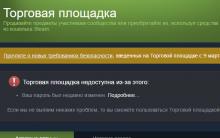
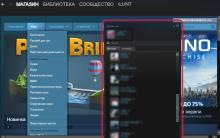
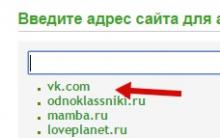
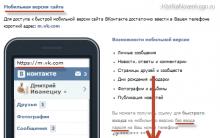
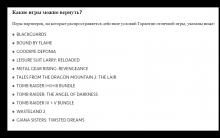





Prolongation of registration of participants in the "Living Classics" competition!
Who deleted me from friends on VKontakte All friends disappeared from the contact
Which operator was the best in Russia
Double cassette tape recorder
"VK" can be closed for a long time